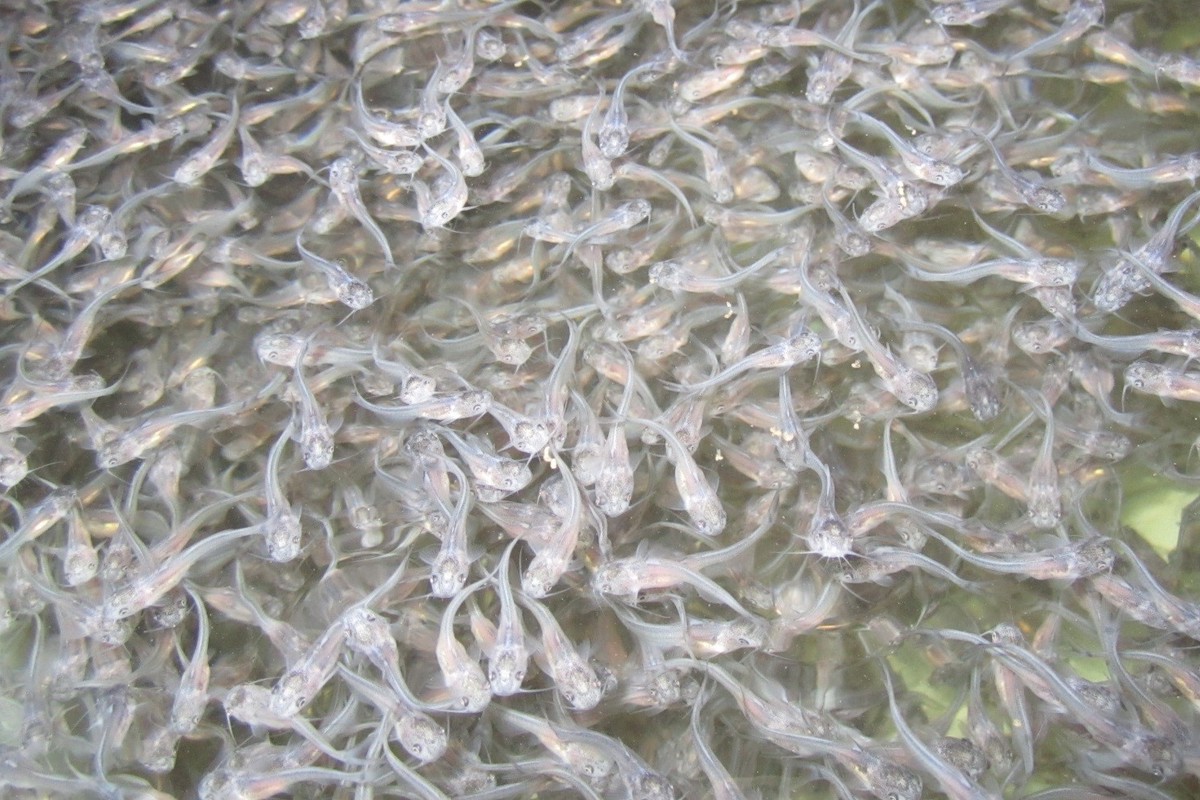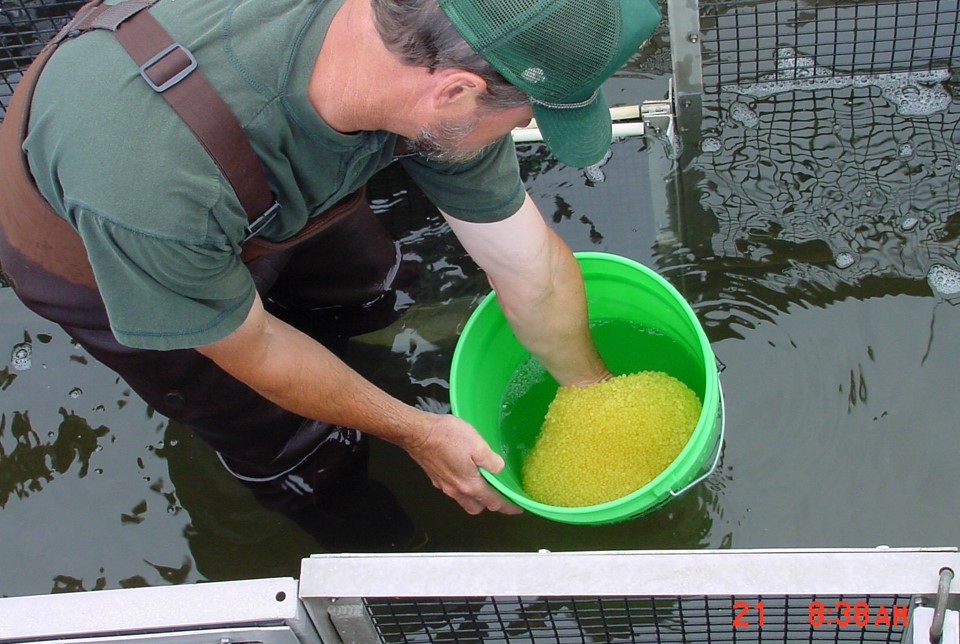
All photos courtesy of the author.



All photos courtesy of the author.
Channel catfish (Ictalurus punctatus) is one of the most highly sought-after fish species in Illinois. They put up a good fight and make great table fare. Opportunities to catch channel catfish are numerous throughout the Prairie State. While naturally reproducing populations are often found in rivers and large reservoirs, many smaller water bodies lack substantial reproduction or recruitment and require periodic supplemental stockings by fish hatcheries to sustain fishable populations.

The hatchery responsible for providing these opportunities for waterbodies managed by the Illinois Department of Natural Resources (IDNR) is Little Grassy Fish Hatchery. Located about 7 miles south of Carbondale (Jackson County), Little Grassy Fish Hatchery is the furthest south of IDNR’s three fish hatcheries. The southern location of Little Grassy Fish Hatchery provides a longer growing season for warmwater species, such as channel catfish, which grow best at temperatures greater than 75°F.
Little Grassy Fish Hatchery produces and stocks around 400,000 to 1,000,000 channel catfish annually. About 340,000 of these are grown to a non-vulnerable size of about 8 inches to be stocked at many of the smaller waterbodies throughout the state where predation by largemouth bass and other fish species is too high to stock smaller catfish.

While Little Grassy Fish Hatchery also produces largemouth bass, bluegill, redear sunfish, black crappie, and blue catfish, the production of channel catfish is much more intensive due to a more “hands-on” spawning process and the fact that they are typically grown out to a larger size before stocking. While most species at Little Grassy Fish Hatchery are spawned in ponds, channel catfish are spawned in large flow-through tanks called raceways. Adult fish are brought up from holding ponds in late-May and divided into spawning pens, each containing a special spawning cavity. While some larger spawning pairs may require a small- to medium-sized barrel for a spawning cavity, the ideal cavity for most channel catfish under 12 pounds is a 15-gallon milk can. As the water temperature warms and day length increases in late-May through early-June, spawning ensues.
When channel catfish spawn they lay their eggs in a large mass held together by a gelatinous matrix. Hatchery technicians check spawning containers twice a week for spawns. When an egg mass is found it is gently removed from the container using a rubber spatula, just like those found in your kitchen, and transferred to a bucket. The spawns are brought inside the hatchery building, weighed, and transferred to individual baskets inside a trough of water until staff get a chance to start the separation process. Egg masses are then transferred to stainless steel bowls where they are submersed in a sodium sulfite solution mixture that breaks down the gelatinous matrix that holds the eggs together. With a little gentle stirring using a glass stirring rod and a stainless steel whisk the separation process is completed. The sodium sulfite solution and any non-egg matter is rinsed out of the bowl with fresh water and the eggs are transferred to a graduated cylinder where their volume is measured.

Based off sample counts used to determine the number of eggs per milliliter the total number of eggs can be estimated. The eggs are then transferred to McDonald hatching jars. These jars have water flowing into them through a tube that goes down the center of the jar and discharges into a curved bottom, guiding the water evenly through the jar from bottom to top. This design ensures that all the eggs will have fresh oxygenated water flowing across them throughout the incubation process. The eggs will typically hatch in 4 to 6 days depending on temperature.
A freshly hatched channel catfish, commonly referred to at this stage as fry, will be very immobile, primarily living on the bottom of the hatching jar for the next few days. Hatchery staff will transfer these fish from hatching jars to flow-through troughs. Most of their body mass at time of hatch is taken up by a large yolk sac. While this yolk sac may seem like a hinderance, it provides all the nutrients that these catfish need to continue to grow for the next few days. As they live off of the yolk sac they will continue to absorb it, using its nutrients as it gets smaller and smaller until no yolk sac remains.
Around day 3 to 5 post-hatch their yolk sac will be completely absorbed. At this point they will need to start feeding to get nutrients to maintain their metabolism and continue to grow. They will start to swim up through the water to try to find food. This stage is referred to as “swim-up” and is a common stage for many fish species. At this point hatchery staff will start providing a powdered commercial fish food using an automated feeder. Staff will continue to feed them in troughs until they outgrow them, typically at a little over one inch long and two weeks post-hatch.

From there the small catfish will be transferred to outdoor ponds where they will be fed until April of the following year. To continue to meet the nutritional needs of the growing catfish, when the fish are about 4 inches in length, the ponds will be harvested, and the fish moved to concrete raceways. In these tanks, staff will continue to feed the fish daily until they are ready to be stocked throughout the state.
The stocking process can take up a good portion of the summer as typically 140 to 240 sites are annually stocked with channel catfish at locations throughout the state.
The process of spawning, growing and stocking channel catfish is time consuming, but pays off big by providing quality fishing opportunities to anglers across the state of Illinois. Little Grassy Fish Hatchery is dedicated to continuing to produce fish to provide such opportunities.
John Zeigler is the manager at Little Grassy Fish Hatchery and resides in southern Illinois where he was born and raised.
Submit a question for the author